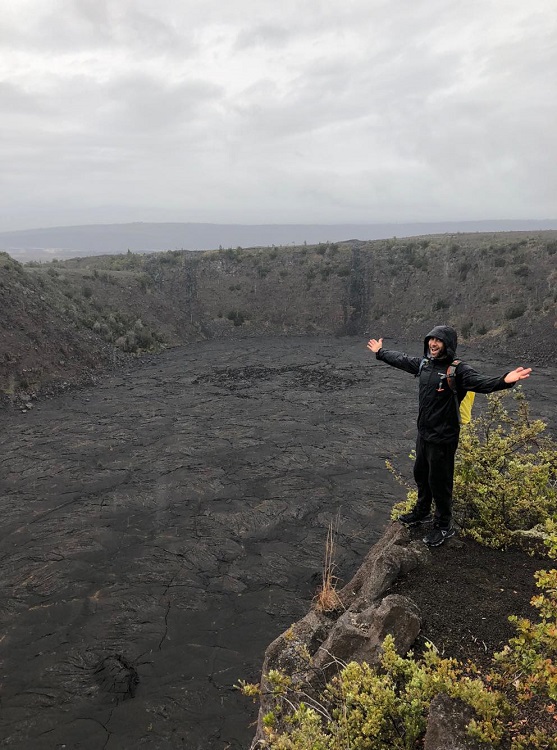Hiking General Sherman and The Giant Forest
Imagine the year 1875. Fueled by the love for the Sierra Nevada, John Muir was led into the southern portions of this long mountain range. Suddenly the conifer forests that cover the Sierra slopes opened up to a new kind of jaw dropping forest. This new kind of forest so different that it almost resembles some sort of prehistoric Jurassic time period. These trees, the giant sequoia, are a sight that several bands of Native Americans had on a regular bases for years before the first European settlers came to the area.
The giant sequoia, are what brings so many visitors through Sequoia National Park’s entrances. The trees themselves are the largest by volume in the entire world. There is no place anywhere like Sequoia National Park where these trees are so abundant. This location in the southwestern Sierra Nevada contains just the right growing conditions for these trees to thrive. In order to live they need the right soil, the right amount of moisture, the right elevation, and the perfect temperature.
When Muir came to the area in 1875 he named one of these groves of sequoia trees, the Giant Forest. The Giant Forest is home to five of the ten largest trees by volume in the entire world. The largest of these is the General Sherman tree. The tree was named by naturalist James Wolverton after the American Civial War general, William Sherman. The tree is a popular attraction in Sequoia National Park and is accessed by a short half mile trail. For a more in depth view of the Giant Forest, the General Sherman Tree trail connects with the two mile Congress Trail.
General Sherman Tree Fun Facts
- Height above base: 279.4 feet.
- Ground circumference: 102.6 feet.
- Diameter at ground: 36.5 feet.
- Estimated volume: 52,508 cubic feet.
- Estimated mass (wet): 2,105 tons.
On A Personal Note:
Visiting the Giant Forest is a must when traveling to Sequoia National Park. However, this area could easily be argued one of the park’s busiest places. It’s not uncommon for there to be a line to catch the shuttle to the trail area. Once there take some time to wander around these magnificent trees and explore the area. I personally think these trees look even better with snow on the ground.
Please avoid taking pictures hugging the trees and standing the base of the trees. The giant sequoia have a very shallow root system. Disrupting the surface soil can lead to damaging their roots and compromise the health of the plant.
Do you have any updates to the hiking trail or want to share your hike/pictures? Please leave a comment below.
- Overall Difficulty: 25%
- Overall Views: 100%
General Sherman Tree Trail Quick Facts :
- Elevation: 7,095 feet.
- Elevation Gain: Approx 154 feet.
- Estimated Distance: 0.8 miles.
- Estimated Time: 30-45 minutes.
- My Time: 30 minutes.
This trail also connects to the two mile Congress Trail for a more in depth look of the Giant Forest.
General Sherman Tree Trail Directions:
From around Memorial Day to Labor Day Sequoia National Park runs a shuttle system. This shuttle system helps to alleviate some of the congestion in the area. It’s not uncommon for the main parking lot to fill up. There will be posted signs for overflow parking indicating where to park. During the winter the shuttle system only runs on some select winter holidays. Snow can fall anytime from late summer to late spring. Check with the park service for the current conditions.
General Sherman Tree Trail Pictures:
- Informational placards line the trial in multiple areas.
- Most of the trail is paved.
- The mighty General Sherman Tree.
- The General Sherman trail as well as the Congress Trail are both paved.
- Pulling the clouds down out of the sky…..
- The base of the tree is massive. During the winter the red wood is perfectly contrast against a snowy backdrop.
Who The General Sherman Tree Trail Is For:
Advanced Hikers: Wandering through towering Sequoias is quite the experience regardless total trail distance. Those looking for more of a walk would likely enjoy doing the entire two miles of the Congress Trail.
Expert Hikers: If you’ve got a day to spend, do this short trail grouped together with other short or moderate sized trails in the area for a full day’s worth of hiking.
It’s always a good idea to be aware of what type of hiking level you’re at.
Best Time Of Year To Hike General Sherman Tree Trail:
It’s always a good idea to check the weather before heading out on a hike.












